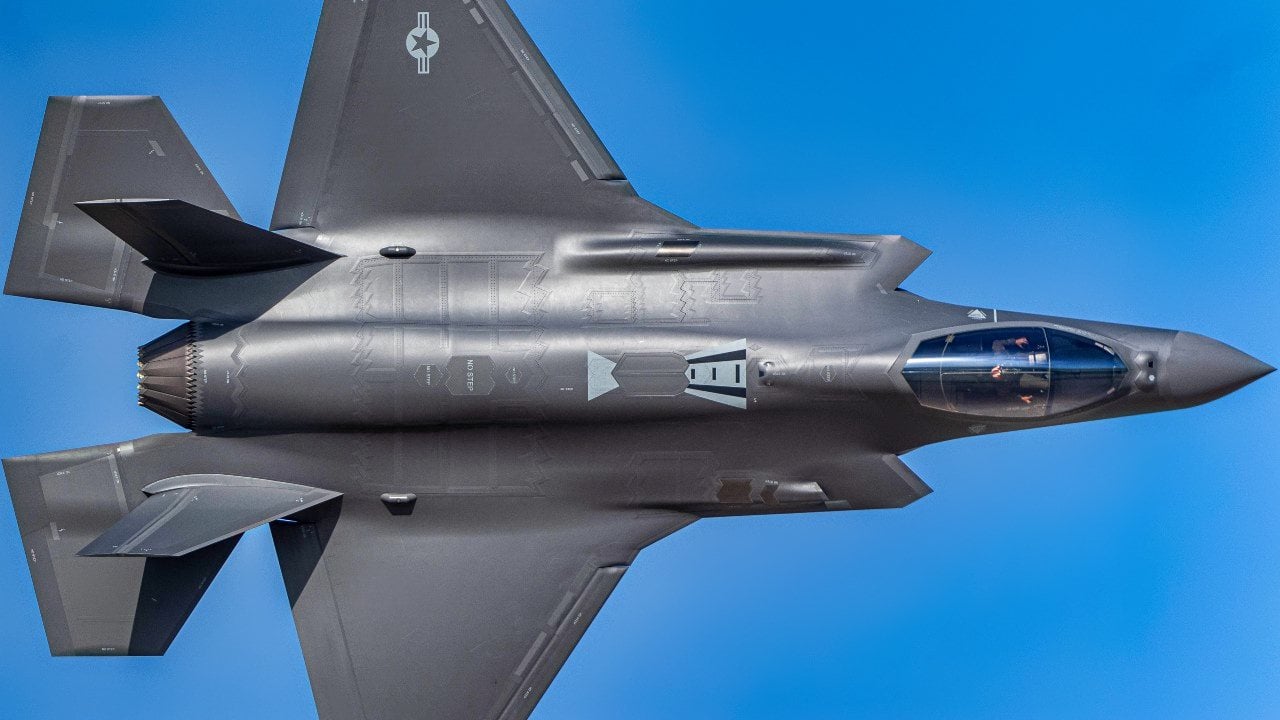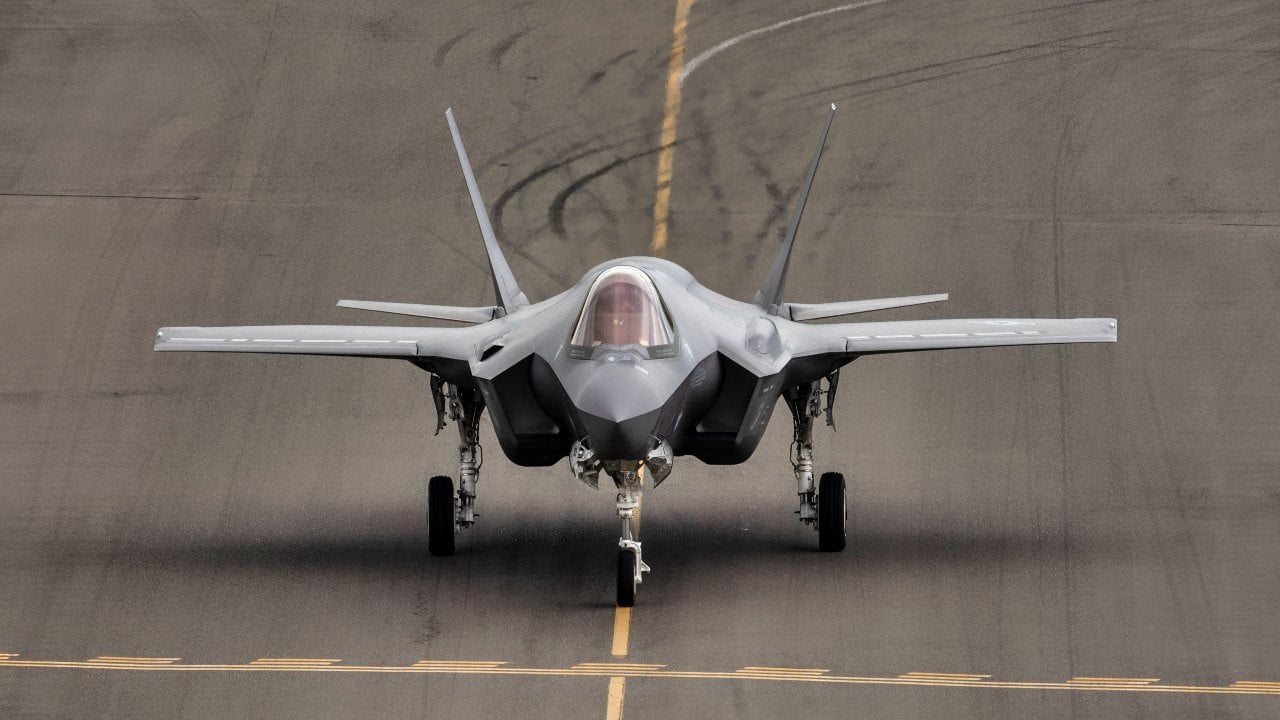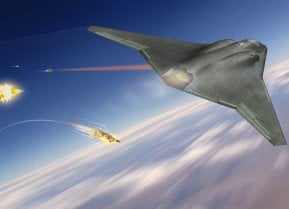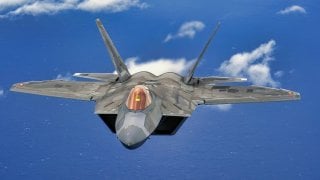F-35 and F-22 Could Soon Have a New Best Friend: NGAS Stealth Tankers
Lockheed Martin’s Skunk Works recently showcased a render for its Next-Generation Aerial-Refueling System (NGAS) at the Airlift/Tanker Association meeting, sparking interest in the future of autonomous refueling capabilities.
What You Need to Know: Lockheed Martin’s Skunk Works recently showcased a render for its Next-Generation Aerial-Refueling System (NGAS) at the Airlift/Tanker Association meeting, sparking interest in the future of autonomous refueling capabilities.
-The concept art reveals a stealthy, autonomous tanker designed to support stealth fighters and drones in contested zones. While details are speculative, the design includes features like a compact fuselage, swept wings, and innovative boom pods.
-The NGAS would shuttle fuel from traditional tankers to combat zones, but Lockheed emphasizes that this is a conceptual model, highlighting trends without revealing proprietary specifics.
-The USAF seeks affordable, stealthy solutions in the NGAS program.
Lockheed Martin's 'Shunk Works' Shares Render of Future Aerial Tanker
Lockheed Martin's Advanced Development Programsmore commonly known as the "Skunk Works"shared renders for its Next-Generation Aerial-refueling System (NGAS) competitor at this month's Airlift/Tanker Association meeting, offering some key details in what we could expect from the yet-to-be prototyped aircraft.
First published by Aviation Week, the images suggested an autonomous aircraft with some degree of stealth. That may not mean the U.S. Air Force will actually operate an unmanned stealth tanker, but the Skunk Works is looking to incorporate such technology in future aircraft.

A Flying Fuel Station for Stealth Fighters
The NGAS wouldn't replace traditional tanker aircraft such as the Boeing KC-46 Pegasus or Boeing KC-135 Stratotanker – which are likely to remain the workhorses for the Air Force – but instead, this would be a smaller tanker that employs its autonomous functionally to accompany manned fifth-generation stealth fighters and unmanned Collaborative Combat Aircraft during a mission.
As Air & Space Forces magazine reported, the NGAS could "shuttle between older, larger tankers, flying out of reach of adversary missiles, and combat aircraft well inside the combat zone."
What The Render Tells Us – And What It Doesn't Say
A few details can be gleaned from the render, yet, such illustrations are regularly released even as a program takes shape, and simply provide only a hint of what we could expect.
"This graphic depicts a notional concept of an optionally-crewed future air-refueling platform," a Skunk Works spokesperson told Aviation Week. "Our team has been maturing the next generation of air mobility through investments in survivability, autonomy, resilient communications and digital transformation that will enable the range and persistence needed for contested air refueling operation."
Yet, it may not be an actual representation of Lockheed Martin's potential offer to the Air Force.
"Rather, this picture is conceptual art that promotes idea for potential designs to address the issues Air Force is interested in seeing in the new stealth fighter," explained Irina Tsukerman, geopolitical analyst and president of Scarab Rising, Inc.
"Such an offering serves the purpose of educating the public and attracting attention to the new trends in stealth fighter design and the options for potential purchasers, without giving away proprietary information or compromising securing," Tsukerman told The National Interest. "In all likelihood, the current design as is would not be able to fulfill the needs of the Air Force requirements, although it is plausible and could in theory work in its current iteration. Amid budget constraints, the Air Force is looking to rethink its major advanced programs, including NGAD, which could lead to a sixth-generation fighter to replace the F-22 Raptor. But to fit into a smaller budget without sacrificing essential features is a tough task."
To address the prospective financial constraints, the new unmanned aircraft is much smaller than a KC-46, which would meet some of the air service's prerequisites to have a radar signature similar to that of stealth fighters, in addition to being able to operate on smaller runways.

"The new design, however, also reflects the divergent dynamic inside the USAF and different demands from the conventional tankers, including the pursuit of the Next-Generation Aerial-refueling System (NGAS) program, which would be better suited for future challenges in contested environments," Tsukerman added. "The Skunk Works decision is an experimental design to reflect these specifications. The design differs from most concepts presented, with a flattened fuselage, swept wings, and a tail with canted vertical stabilizers. The two pods near the wingtips, from which rigid booms for in-flight refueling emerge, are striking. The engine exhaust is located in the tail, between the stabilizers, but the air intakes cannot be identified. The most likely location is in the nose or in the lower part of the fuselage, however."
Such features could be incorporated in various future designs.
However, Tsukerman suggested these are no more likely to be used in the current scheme than the concept cars featured at car shows. And for those reasons, we need not worry that potential adversaries will be able to draw any conclusions about the future unmanned tanker.
"Most likely USAF will consider the different elements and how it fits with the funding, the stealth demands, and considerations for new environments and new challenges, and use these elements in the several likely potential designs that will also meet other needs," she added. "The 'model' featured in the released image will instead reveal a glimpse of the general direction of the USAF is going in and promote the potential for additional such designs for any additional purchasers who seek to understand market trends before they happen."

Author Experience and Expertise: Peter Suciu
Peter Suciu is a Michigan-based writer. He has contributed to more than four dozen magazines, newspapers, and websites with over 3,200 published pieces over a twenty-year career in journalism. He regularly writes about military hardware, firearms history, cybersecurity, politics, and international affairs. Peter is also a Contributing Writer for Forbes and Clearance Jobs. You can follow him on Twitter: @PeterSuciu. You can email the author: [email protected].
Image Credit: Creative Commons and/or Shutterstock.
From the Vault


